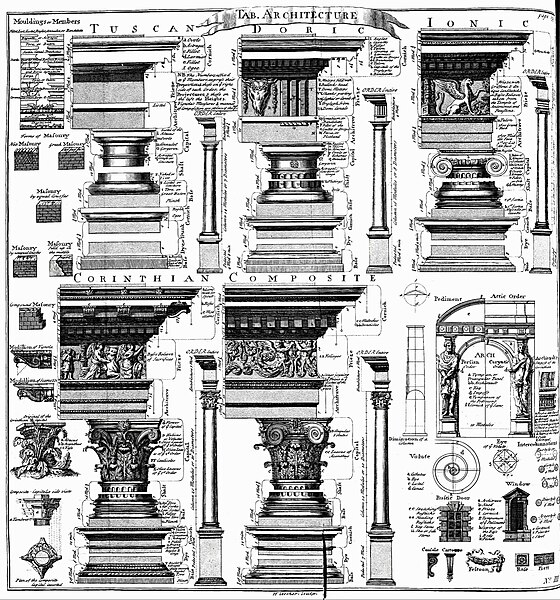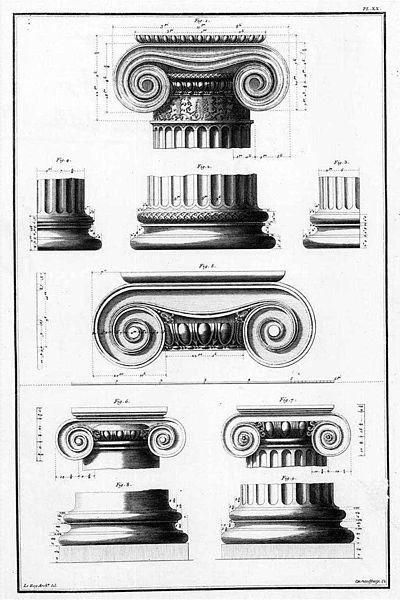The Ionic order is one of the three canonic orders of classical architecture, the other two being the Doric and the Corinthian. There are two lesser orders: the Tuscan, and the rich variant of Corinthian called the composite order. Of the three classical canonic orders, the Corinthian order has the narrowest columns, followed by the Ionic order, with the Doric order having the widest columns.
Architects' first real look at the Greek Ionic order: Julien David LeRoy, Les ruines plus beaux des monuments de la Grèce Paris, 1758 (Plate XX)
Ionic capital at the Erechtheum (Athens), 5th century BC
Original polychromy in Ionic temples
19th century illustration of multiple polychrome elements of Ancient Greek architecture, including an Ionic capital in the top left, by Jacques Ignace Hittorff
An order in architecture is a certain assemblage of parts subject to uniform established proportions, regulated by the office that each part has to perform.
Coming down to the present from Ancient Greek and Ancient Roman civilization, the architectural orders are the styles of classical architecture, each distinguished by its proportions and characteristic profiles and details, and most readily recognizable by the type of column employed. The three orders of architecture—the Doric, Ionic, and Corinthian—originated in Greece. To these the Romans added, in practice if not in name, the Tuscan, which they made simpler than Doric, and the Composite, which was more ornamental than the Corinthian. The architectural order of a classical building is akin to the mode or key of classical music; the grammar or rhetoric of a written composition. It is established by certain modules like the intervals of music, and it raises certain expectations in an audience attuned to its language.

Illustrations of the Classical orders (from left to right): Tuscan, Doric, Ionic, Corinthian and Composite, made in 1728, from Cyclopædia
Greek orders with full height
Doric capital of the Parthenon from Athens
Ionic capital from the Queen Elizabeth II Great Court of the British Museum (London)








